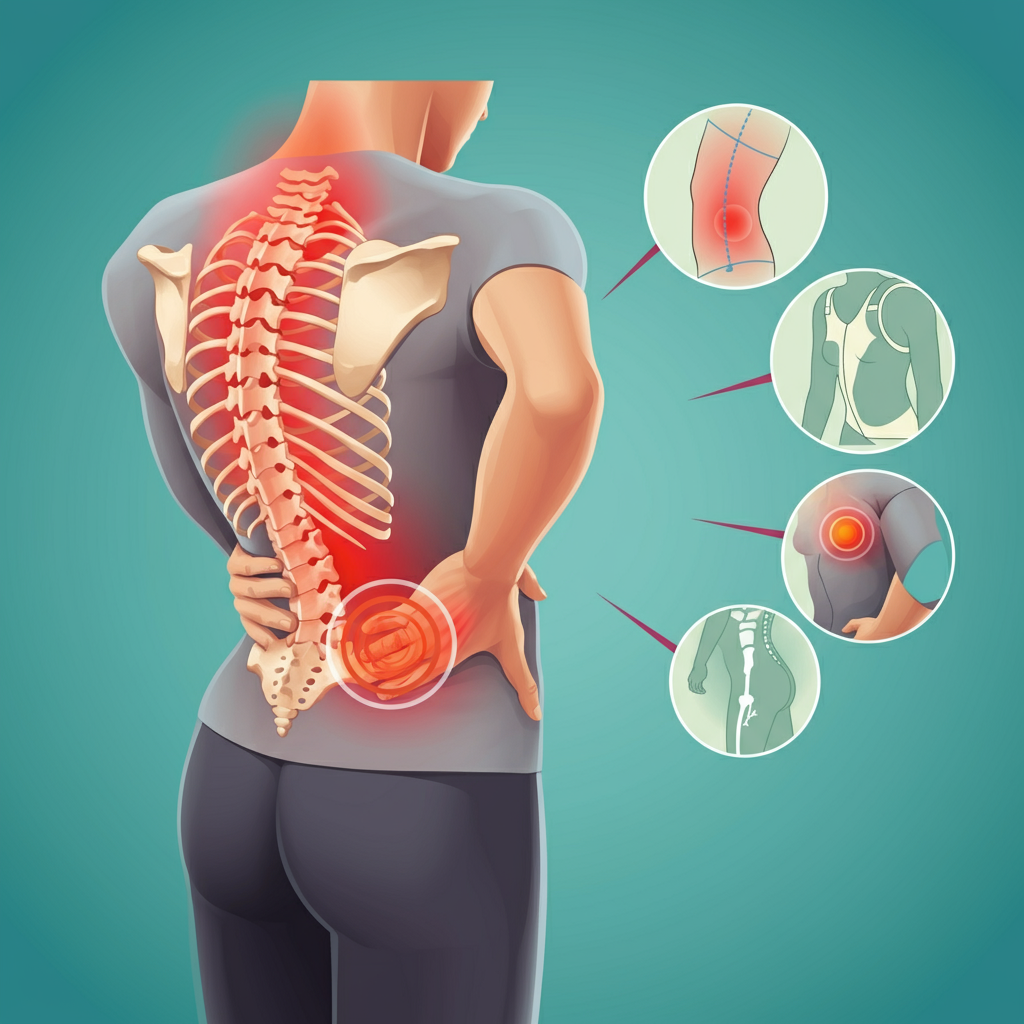Back Pain: Causes, Relief, and Exercises to Strengthen Your Spine
Back pain is a common yet debilitating issue that affects millions of people worldwide. Whether it’s caused by poor posture at work, intense workouts, or the physical demands of pregnancy, understanding how to manage and treat back pain is essential for a better quality of life.
This guide will explore the causes of the condition, introduce methods for relief, outline exercises to strengthen your spine, and provide actionable tips to prevent future discomfort. Whether you’re a fitness enthusiast, an expectant mother, or simply someone dealing with recurring pain, this guide has you covered.
Common Causes of Back Pain
1. Poor Posture
Slouching at your desk or hunching over your phone can lead to lower back pain. Over time, poor posture places unnecessary strain on the spine and surrounding muscles, leading to pain and stiffness.
2. Sedentary Lifestyle
A lack of physical activity can weaken the back muscles, making them less capable of supporting your spine and leading to discomfort.
3. Injuries or Strain
Sports injuries, heavy lifting, or sudden awkward movements can strain muscles and ligaments, causing acute pain.
4. Pregnancy
Back pain during pregnancy is common due to weight gain, hormonal changes, and shifts in posture as the baby grows.
5. Chronic Conditions
Conditions like arthritis, herniated discs, sciatica, and scoliosis can all contribute to chronic back pain, requiring long-term management and care.
Symptoms of Back Pain
Back pain symptoms can vary depending on the root cause. Common symptoms include:
- Muscle aches or spasms.
- Sharp or shooting pain, often in the lower back.
- Pain that worsens with certain movements (e.g., bending or lifting).
- Trouble standing up straight or walking.
- Persistent stiffness, particularly in the morning.
If you experience numbness, tingling, or severe pain that radiates down your legs, consult a healthcare professional immediately.
Effective Back Pain Relief Methods

1. Heat and Cold Therapy
Use ice packs to reduce inflammation and heat pads to relax tense muscles. Alternate between the two for optimal relief.
2. Over-the-Counter Pain Relievers
Nonsteroidal anti-inflammatory drugs (NSAIDs) like ibuprofen can temporarily alleviate pain and inflammation.
3. Gentle Yoga or Stretching
Practices like child’s pose, cat-cow, and downward dog can ease tension and improve flexibility.
4. Massage Therapy
A skilled massage therapist can relieve muscle knots and improve blood flow to the affected area.
“Studies show that regular stretching and strengthening exercises can decrease back pain by up to 60%.” – Journal of Physical Therapy
Strengthening Exercises for Your Spine
Strengthening your back muscles can provide long-term relief and prevent future injuries. Here are a few back pain exercises you can try:
1. Bird Dog Exercise
- Start on your hands and knees.
- Extend your right arm and left leg simultaneously, keeping your back flat.
- Hold for a few seconds, then switch sides.
2. Plank
- Lie face down and lift your body onto your forearms and toes.
- Keep your body in a straight line, engaging your core and back muscles.
3. Bridges
- Lie on your back with knees bent.
- Lift your hips until your body forms a straight line from shoulders to knees.
4. Child’s Pose
- Sit back on your heels and stretch your arms forward, lowering your forehead to the ground.
“Maintaining a healthy weight can significantly reduce the strain on your back.” – Dr. John Smith, Orthopedic Specialist
Back Pain During Pregnancy
Pregnancy-related back pain often stems from the growing weight of the belly, altering your center of gravity. Safe relief methods include:
- Maternity support belts.
- Prenatal yoga or stretching.
- Sleeping on your side with a pillow between your knees.
If pain persists, consult your doctor to explore further back pain treatments.
Home Remedies and Lifestyle Adjustments
Beyond exercises and medical treatments, incorporating these changes into your daily life can help manage back pain effectively.
1. Prioritize Good Posture
“Proper posture is key to preventing back pain. Keep your ears, shoulders, and hips aligned when sitting and standing.” – Jane Doe, Certified Ergonomics Expert
2. Choose the Right Mattress
A firm yet supportive mattress can alleviate pressure and support spinal alignment. “A mattress that provides adequate support can improve sleep quality and reduce morning back stiffness.” – National Sleep Foundation
3. Eat an Anti-Inflammatory Diet
Include foods like leafy greens, fatty fish, and nuts to reduce inflammation that may worsen pain.
4. Stress Management
Stress can lead to muscle tension, worsening back pain. Try mindfulness, meditation, or breathing exercises to keep stress in check.
When to Seek Medical Attention
While most back pain resolves with home remedies and exercises, certain symptoms should prompt a visit to a doctor, including:
- Persistent or worsening pain lasting more than a few weeks.
- Numbness, tingling, or weakness in your legs.
- Pain following a recent injury or accident.
- Loss of bladder or bowel control.
The Role of Alternative Therapies
If conventional treatments don’t fully address your pain, alternative methods like chiropractic care, acupuncture, or physical therapy may be worth exploring.
Workplace Ergonomics and Back Pain Prevention
For desk workers, poor ergonomics can quickly lead to back pain. Invest in an ergonomic chair, place your screen at eye level, and avoid slouching.
Taking Control of Your Back Health
Back pain may be a common issue, but it doesn’t have to control your life. By understanding the causes, implementing relief methods, and strengthening your spine with regular exercises, you can significantly improve your quality of life.
Remember, living pain-free starts with proactive measures. If you’re unsure where to begin, consult a healthcare professional or physical therapist to develop a personalized plan.



Pingback: What You Need to Know About Lactose Intolerance